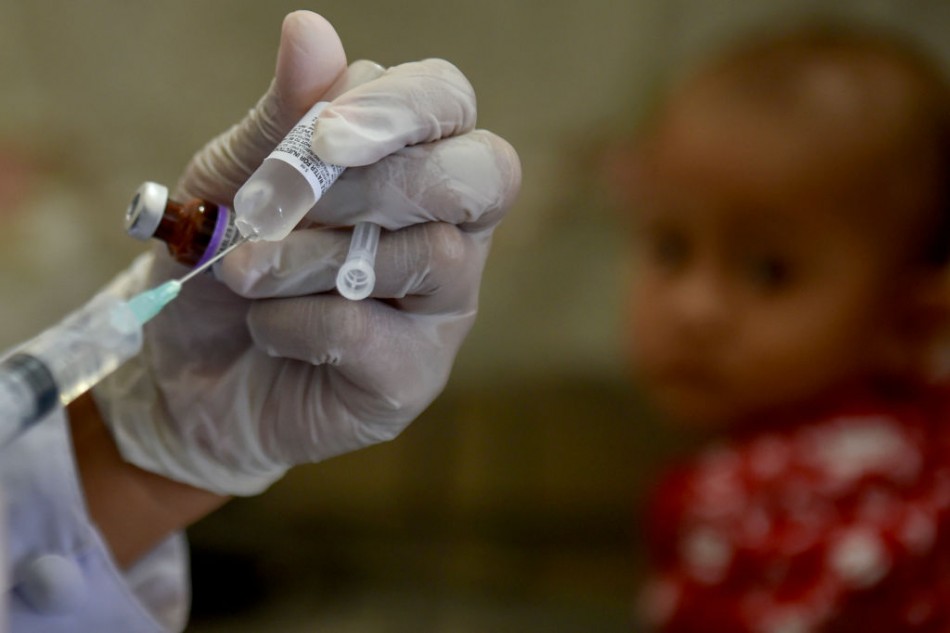Polio in New York: Hundreds Feared Infected as CDC Sends Team to Investigate Community Spread

A small team of investigators has been dispatched by the U.S. Centers for Disease Control and Prevention (CDC) to investigate a potential community spread of polio in New York after one unvaccinated adult resident from Rockland County suffered paralysis from the virus.
Traces of the virus were also found in the wastewater samples collected from June to July in at least two counties north of New York City, prompting the state's Health Commissioner, Dr. Mary T. Bassett, to issue a warning of a potential community spread.
In a statement via NBC New York, Bassett said that the polio patient has received medical attention but the case is likely just the "tip of the iceberg."
"The danger of polio is present in New York today," Bassett said and urged the immediate immunization of adults and children above two months old, as well as pregnant people.
Read Also: Updated COVID-19 Boosters to Specifically Target Omicron Will Roll Out in September
How did polio in New York return?
Rockland County has a historically low vaccination rate for polio at 60 percent while its neighbor, Orange County, has a 58 percent vaccination rate. The average vaccination rate across the state is higher at 79 percent.
In 1979, the United States was declared polio-free. However, there have been instances of the virus re-emergence due to visiting travelers, which have been controlled by the CDC. The last known confirmed polio case in the whole U.S. was in 2013. The last known case of polio in New York was recorded in 1990.
But in July 2022, an unvaccinated man in his early 20s was diagnosed with polio after suffering from muscle weakness and paralysis for nearly a month. According to CNN, the man was confirmed to have revertant polio Sabin type 2 virus, which means that he likely contracted the virus from someone who received an oral polio vaccine (OPV). The phenomenon is known as vaccine shedding.
The U.S., however, switched to inactivated polio vaccine (IPV) in 2000, which is administered through a jab. The New York case suggests that the patient may have been exposed to someone from outside of the U.S. who received a polo vaccine where OPV is still being used.
The patient, however, has not traveled abroad prior to his diagnosis. Health officials said he was contagious for about two weeks after he caught the virus.
Unfortunately, there is no cure for this disease once it has affected an individual, thus the urgent call to get vaccinated via injection. A polio vaccine is standard for the CDC and it's required in most schools across the country.
Red flag for parents
Pediatrician and neonatologist Dr. Jessica Madden said that the return of polio in New York is a red flag for many parents as children, especially the unvaccinated ones, are vulnerable to the virus.
Speaking with She Knows, Madden said that kids who contract the virus may be contagious even in very mild cases, which means that the disease can be very disruptive to any household. Symptoms of polio start with a sore throat, fever, tiredness, nausea, headache and stomach pain. The symptoms may last between two to five days but one out of 100 patients may develop serious problems like parathesia (pins and needles), paralysis or meningitis.
As with other health officials, Madden insisted on the vaccination. Polio vaccines in children are given in four doses, between two months to 6 years old. Children who have missed out on their vaccine completion may catch up. Adult vaccinations, on the other hand, are given at three doses. The experts advise visiting a health professional to assess their individual health status.
Related Article: Healthy Mom and 3-Year-Old Daughter Exposed to Monkeypox; What They Did to Avoid Symptoms
© 2024 ParentHerald.com All rights reserved. Do not reproduce without permission.
